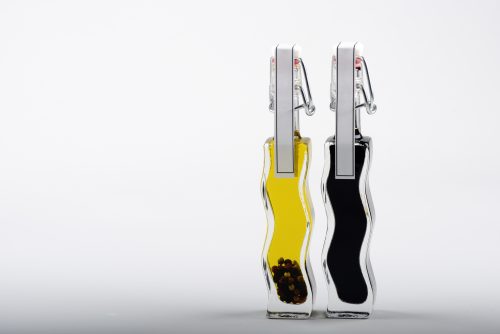
Tips on making a little of the best ingredients go a long way.
My mum always said good jewellery was more important than expensive clothes. Who cares that the dress is second-hand when the gold is 24 carat and the rubies real?
She could spot a good emerald at 100m, across a crowded restaurant. And would hiss phrases like, “Opal and diamond cluster at 2 o’clock”. To which my sister and I would obediently swivel our eyes to goggle at said opals and diamonds.
Apply the same principle to ingredients, making a luxury ingredient the star, and few people will pay much attention to the supporting cast. A little of something truly good has the power to transform whatever it is with.
Given the chance, I would, without question, choose to eat only the very best. All organic, hand-reared food, tenderly tickled onto my plate. But if, like me, you want to eat well and spend less, then the best of everything is out of the question.
Food is all about flavour and texture (okay, and nutrition). So I buy the best quality flavours I can afford. Interestingly, the best isn’t always the most expensive. Whole spices from the Indian supermarket are cheaper than stale, ready-ground spices. But just as a violin must be played or it reverts to being a piece of wood (I read that somewhere), so ingredients have a ‘life’. ‘Best before’ generally means exactly what it says.
Bulk buying treats and eking them out can be good value. But only if you use them before they become stale or rancid. Because where it really matters is in the mouth.
It’s helpful to identify what luxury ingredients are really important to you and team them up with inexpensive accompaniments.
When you shop, try and buy only one luxury ingredient a week but do so thoughtfully. Then take care how you use it. Here are some of my ‘luxe’ favourites and background cast. Yours may differ from mine but you’ll get the idea.
Quality over quantity
- I buy the best quality bacon I can afford. Often the cheaper the bacon, the higher the water content. Why pay for water weight? Good cured bacon has loads of flavour and keeps well. A little goes a long way, adding flavour to a wide variety of really inexpensive but delicious and fashionable dishes.
- A chunk of parmesan or gruyere cheese will add really good flavour to a really inexpensive dish like soufflé, risotto, pasta, pizza, gratin or mac ‘n cheese. Use sparingly and lovingly.
- I buy a few proper ‘made from actual meat’ sausages for a good sausagey flavour. Cheaper ‘flavoured’ sausages produce neither a satisfactory flavour nor texture. Avoid if possible! Instead, try snags made with pride by a butcher not a factory, with fresh herbs and spices. Freeze in packs of three and use with inexpensive seasonal veg, pulses, rice or pasta.
- Chocolate should always make your toes curl. In fact, if it’s not moan-inducingly good, something is wrong. Buy the best you can afford. For good chocolate flavour avoid ‘looks like chocolate’ products made with vegetable fat. Likewise, you often get what you pay for with cheap cocoa; a brief flirtation with flavour but no follow-through. A mere mouthful of good chocolate can transport you to a better time and place.
- Save the cold pressed, single origin, extra virgin olive oil for dressings, salads and bread; the places where the distinctive flavour of the oil can be appreciated. Use a cheapie for roasting the spuds. Store your good oil in a dark bottle away from direct sunlight.
- Save the really good balsamic vinegar for dressing and drizzling. If you boil it you evaporate away hard-earned cash, so use a cheapie for reduction type sauces.
- Good coffee – ’nuff said.
- Stock can make or break a dish – use real stock for consommé, and other clear soups like noodle and dumpling soups or reduced sauces. Use powder only where no one will notice, like stews or strongly-flavoured soups.
- Pasta – I use dried pasta for spaghetti and weeknight meals. For lasagne, fettuccine or entertaining I make my own with flour and eggs, which is ultra inexpensive! But I’ll put kalamata olives in the sauce and serve with real parmesan.
Quantity over quality
- I buy 5kg bags of house brand flour. Eleven per cent gluten is sufficient to produce decent bread. No one has ever complained. They’re just grateful to eat my bread and baking.
- Tinned tomatoes: the cheaper the better. They are only ever one component in a dish.
- Butter, milk and other staples – house brand again.
- Veggies – we eat loads of whatever is at the peak of its season; fresh, cheap and delicious. You can save money by opting for the less-than-perfect looking produce which is usually on special. Buy loads and eat them up.
www.healthyfood.com










